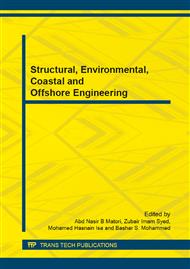p.711
p.717
p.724
p.730
p.736
p.742
p.749
p.755
p.763
Measuring Driver’s Percent-Time-Spent-Following Using a Moving Video Recording Technique
Abstract:
The percent time spent following (PTSF) or proportion of following time (PFT) relative to total travel time taken by vehicles to traverse a particular segment of two-lane highways has been used as key performance index for evaluating the level-of-service of the road. From the context of travel time, this implies that PTSF is a space related indicator and thus supposed to be measured over a road segment. However, this indicator is measured in the field based on specific point observation; as equivalent to the percent of vehicles traveling with time headways shorter than 3 s. The accuracy of PTSF estimates based on this approach has been questioned and criticized by many; as spot measured values may not to be real representative of segment estimates. This paper presents an exploration into the application of moving video recording technique for PTSF measurement. PTSF was estimated based on test vehicle following time on two-lane highways using moving car observer method as an alternative approach for field measurement of the indicator along road segment as opposed the existing practice of spot measurement and assumed representative of long segment. Findings from this work demonstrate that the approach used in this study is promising for field measurement of PTSF; as estimates obtained relate well with the major vehicle’s following cause factors.
Info:
Periodical:
Pages:
736-741
Citation:
Online since:
June 2014
Authors:
Keywords:
Price:
Сopyright:
© 2014 Trans Tech Publications Ltd. All Rights Reserved
Share:
Citation:


